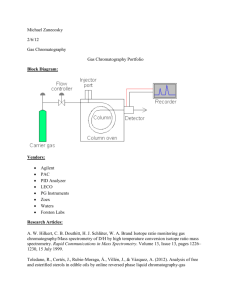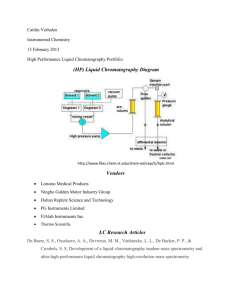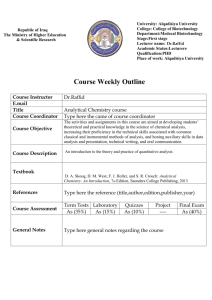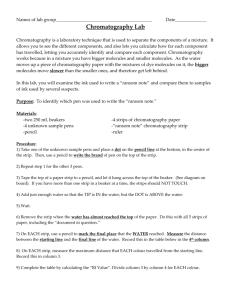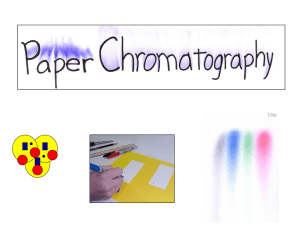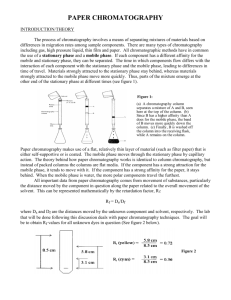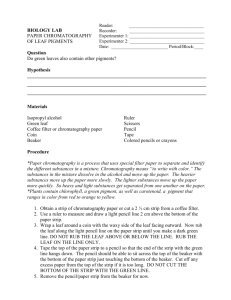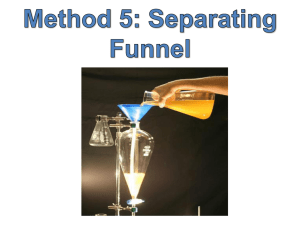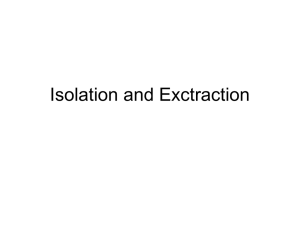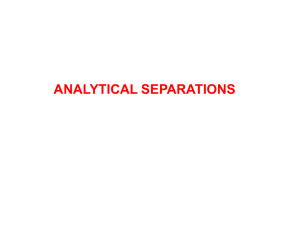Paper Chromatography Lab Powerpoint
advertisement
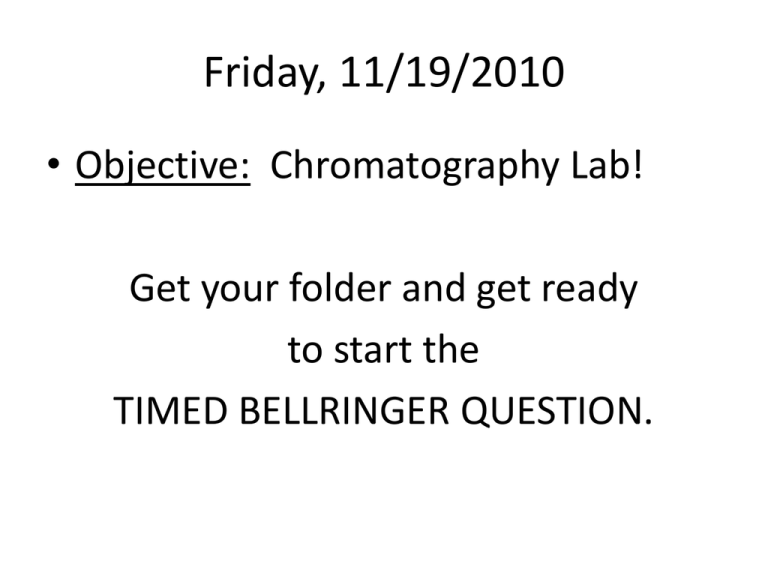
Friday, 11/19/2010 • Objective: Chromatography Lab! Get your folder and get ready to start the TIMED BELLRINGER QUESTION. BELL RINGER 5 MINUTES 1. How do plants get energy? 2. Why do leaves change colors in the fall? BELL RINGER 4 MINUTES 1. How do plants get energy? 2. Why do leaves change colors in the fall? BELL RINGER 3 MINUTES 1. How do plants get energy? 2. Why do leaves change colors in the fall? BELL RINGER 2 MINUTES 1. How do plants get energy? 2. Why do leaves change colors in the fall? BELL RINGER 1 MINUTE 1. How do plants get energy? 2. Why do leaves change colors in the fall? TIME’S UP!!!!! Paper Chromatography Lab What is Chromatography? Chromatography is a technique for separating mixtures into their components in order to analyze, identify, purify, and/or quantify the mixture or components. • Analyze Separate • Identify • Purify Mixture Components • Quantify Uses for Chromatography Chromatography is used by scientists to: • Analyze – examine a mixture, its components, and their relations to one another • Identify – determine the identity of a mixture or components based on known components • Purify – separate components in order to isolate one of interest for further study • Quantify – determine the amount of the a mixture and/or the components present in the sample Illustration of Chromatography Separation Mixture Components Uses for Chromatography Real-life examples of uses for chromatography: • Pharmaceutical Company – determine amount of each chemical found in new product • Hospital – detect blood or alcohol levels in a patient’s blood stream • Law Enforcement – to compare a sample found at a crime scene to samples from suspects • Environmental Agency – determine the level of pollutants in the water supply • Manufacturing Plant – to purify a chemical needed to make a product Overview of the Experiment Purpose: • To explain the relationship between pigments and photosynthesis. • To predict which pigment colors would be best for photosynthesis. Materials List • 100 mL beaker • Isopropyl Alcohol (10 mL) • Chromatography paper strip • Spinach leaf solution – Red leaf lettuce solution • • • • • Disposable Pipette Pencil Ruler Scissors Tape Preparing the Chromatography Strips 1. Draw a line 1.5 cm above the bottom edge of the strip with the pencil 2. Starting at the line, taper the bottom of the paper with scissors. 3. Place 1-2 drops of the spinach leaf solution on the starting line and allow to dry Developing the Chromatograms • Place the strip in the beaker • Make sure the solution does not come above the drop on your start line • Fold the top of the strip over your beaker and tape to keep in place • Let strips develop for approximately 15 minutes • Remove the strips and let them dry RESULTS • Use the table on your lab handout to analyze your chromatography strip • Answer the analysis questions in your lab notebook Debrief/Wrap Up Knowledge of Inquiry *Scientific investigation begin with a problem but don’t necessarily test a hypothesis *There is no single scientific method *Inquiry procedures are guided by a question *All scientists performing the same procedures may not get the same results *Inquiry procedures can influence results *Conclusions must be consistent with the data *Scientific data is not the same as scientific evidence *Explanations are developed from the data and what is known NOS *Tentativeness *Creativity *Observation vs. Inference *Subjectivity *Theory and law *Socially/culturally embedded *Empircally based Suggestions/Comments:

